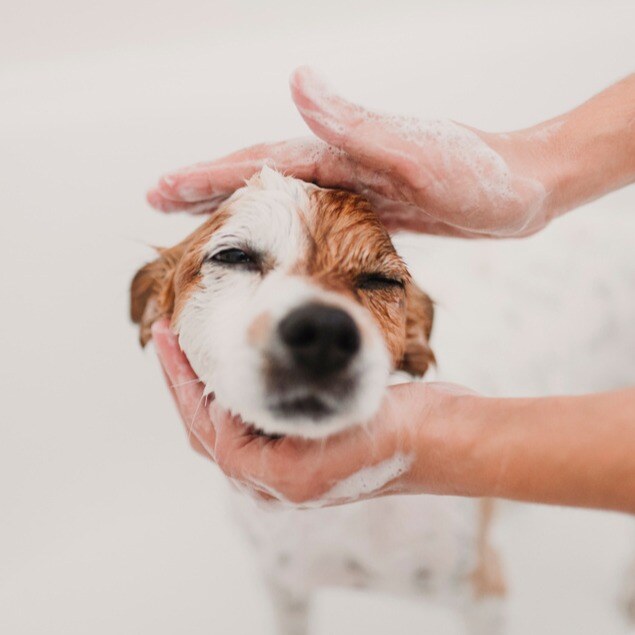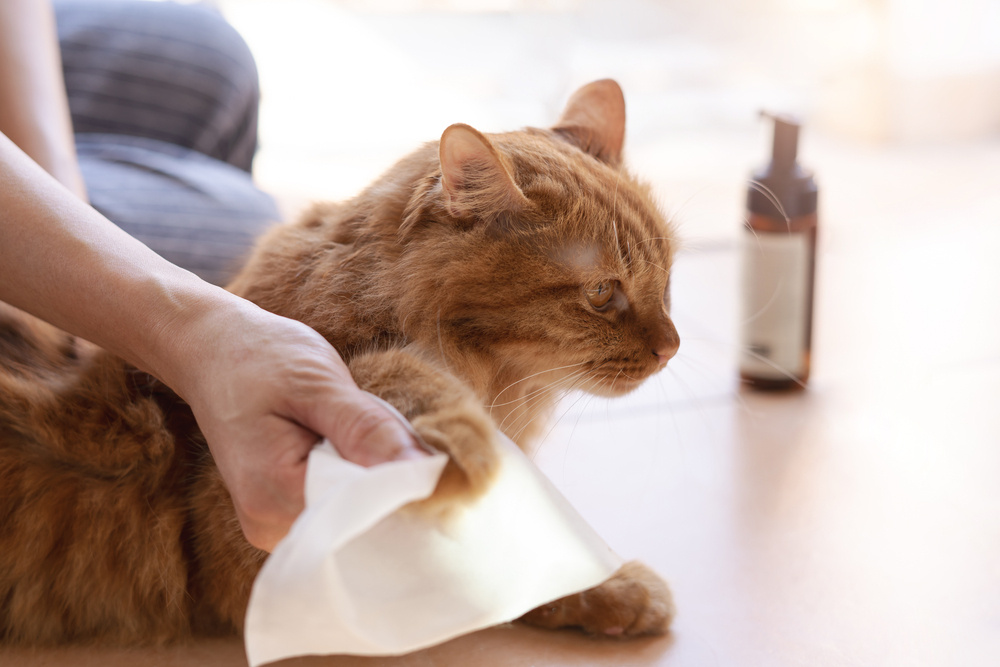
Hygiene & hydration
Maintaining optimal skin hygiene and hydration is crucial for the dermatological health of dogs and cats. A well-balanced skin barrier protects against environmental aggressors, allergens, and microbial infections, while proper hydration ensures resilience and comfort. Disruptions in skin hygiene—whether due to underlying conditions, environmental factors, or improper grooming—can lead to dryness, irritation, excessive oiliness, secondary infections, and persistent skin odors.
Why Proper Hygiene Matters
Regular skin and coat care helps:
- Remove dirt, allergens, and excess sebum
- Control microbial overgrowth (bacteria and yeast)
- Reduce irritation and inflammation
- Support a healthy skin barrier and prevent dehydration
However, frequent washing with harsh products can strip away essential lipids, leading to increased transepidermal water loss (TEWL), dryness, and further skin irritation. Selecting gentle yet effective hygiene solutions is key to maintaining skin balance.
The Importance of Skin Hydration
A well-hydrated skin barrier maintains elasticity, reduces transepidermal water loss (TEWL), and prevents conditions such as dry skin and seborrhea. Hydration is especially important for pets with:
- Atopic dermatitis and allergic skin conditions
- Dry, flaky, or sensitive skin
- Post-treatment recovery from dermatological infections
Supporting skin hydration through topical and systemic approaches is key to maintaining long-term skin balance.
-
.jpg)
Rinse free foams is a great way to clean and hydrate the skin between washes
-

It can be difficult to wash a cat, wipes are a great alternative to clean and hydrate the skin without water
Managing Skin Odor in Pets
A persistent or strong odor from a pet’s skin is often a sign of an imbalance in the skin’s microbiome, excessive sebum production, or secondary infections. Common dermatological causes of skin odor include:
Seborrhea (oily or dry): Excessive sebum buildup can create a rancid, greasy smell, particularly in breeds prone to seborrheic disorders. Read more
Microbial Overgrowth: An imbalance in the skin’s natural flora, particularly an overgrowth of bacteria (Staphylococcus) or yeast (Malassezia), often produces a musty or yeasty odor. Read more
Chronic Inflammation & Allergies: Atopic dermatitis and other allergic conditions can lead to inflammation and secondary infections, contributing to foul-smelling skin. Read more
Moisture Retention & Poor Ventilation: Skin folds, dense coats, or excessive moisture can create an environment that encourages microbial proliferation and odor development.
Product selection for hygiene and hydration
Veterinary dermatological care should incorporate products that cleanse, hydrate, and control odor without disrupting the skin’s natural defences. Here are the products to keep on hand:
Dermoscent Essential Mousse®

...is a rinse-free cleansing mousse that offers an alternative to traditional bathing, making it ideal for pets that are difficult to bathe or require frequent hygiene maintenance. This leave-on formula gently removes dirt and excess sebum while hydrating the skin and neutralizing odors. Its natural plant-based ingredients, including essential oils and soothing agents, help maintain skin balance without disrupting the natural microbiome. There is a version for dogs aswell as one for cats.
Dermoscent® EFA Physio Shampoo

...is a mild, soap-free shampoo designed for regular use in pets. Enriched with essential fatty acids (EFAs), this shampoo gently cleanses while restoring the skin’s lipid barrier. Its moisturizing properties help prevent dehydration, making it suitable for pets requiring frequent washing without the risk of skin irritation.